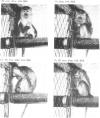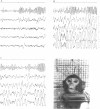Abstract
1. The drug HA-966 (1-hydroxy-3-amino-pyrrolidone-2), which chemically resembles the cyclic form of GABA, has been studied for neuro-pharmacological properties and for effects on the catecholamine content of the corpus striatum.
2. The acute effects on spontaneous behaviour of rodents included flaccid catalepsy and reversible tranquillization in doses which were 5% or less of the lethal dose. Long lasting depression of the CNS, followed by complete recovery, was produced in the cat and the dog. In the monkey HA-966 caused periodical sleeping episodes.
3. The exploratory behaviour and the amphetamine-induced motor activity in mice were blocked by HA-966. The toxicity of amphetamine in aggregated mice was only moderately reduced, suggesting that HA-966 differs from neuroleptics.
4. Tremors induced by chemical agents (nicotine, zinc and tremorine) were markedly inhibited by HA-966. The muscarinic effects of tremorine were not reduced by HA-966, indicating a selective central antitremor effect.
5. HA-966 elevated the threshold to strychnine convulsions and abolished the ipsilateral flexor reflex, while not having motor endplate blocking properties. It is suggested that HA-966 depresses central internuncial neurones.
6. In rats and rabbits HA-966 produced synchronous EEG and inhibited the sensory arousal in doses not causing sedation. In the monkey the drug caused a periodical dissociation between `sleep-EEG' and behaviour.
7. In rat brain, HA-966 selectively elevated the dopamine content in the corpus striatum, while no changes in noradrenaline and 5-hydroxytryptamine contents could be demonstrated. The effect was still present when dopa synthesis was inhibited with α-methyl-p-tyrosine.
8. Several effects of intravenously administered HA-966 became manifest after an appreciable delay and in hepatectomized mice the effects were much reduced. It is postulated that HA-966 is converted to a pharmacologically active metabolite.
9. The results are discussed in the light of current views on drug therapy in extrapyramidal conditions and a GABA-related hypothesis as to the mode of action of HA-966 is presented.
Full text
PDF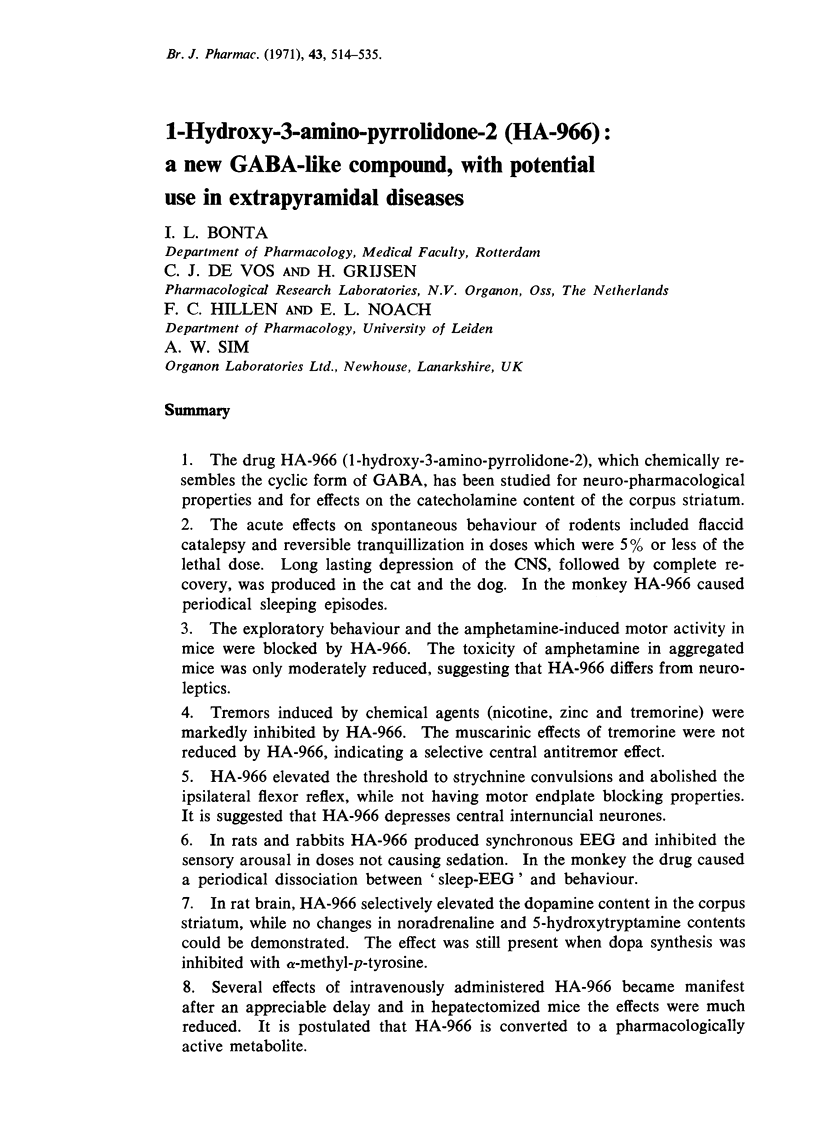
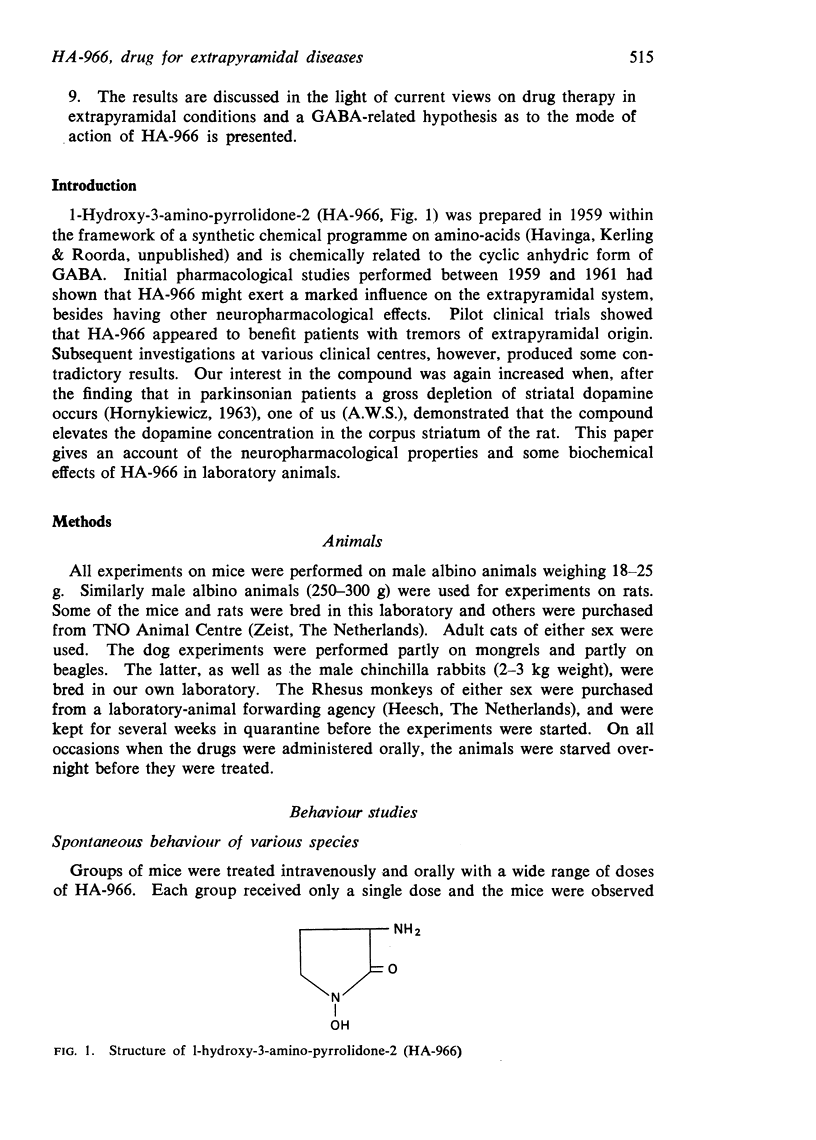
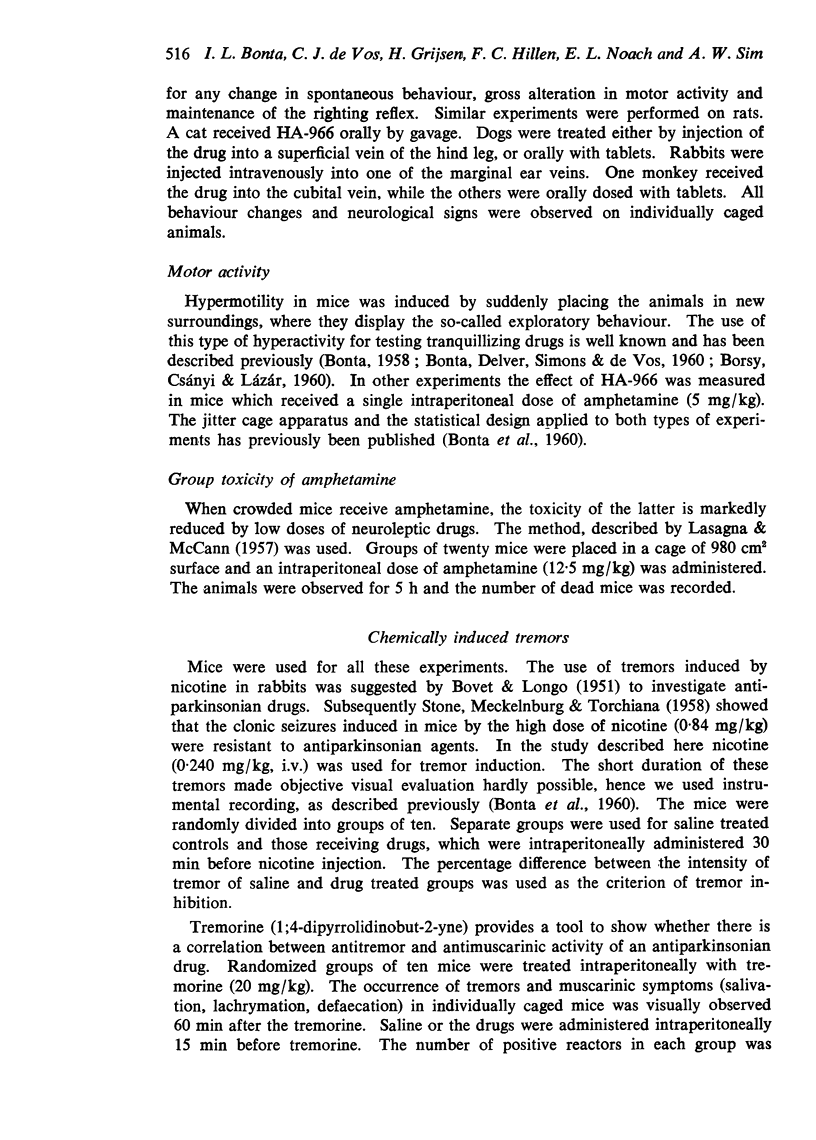
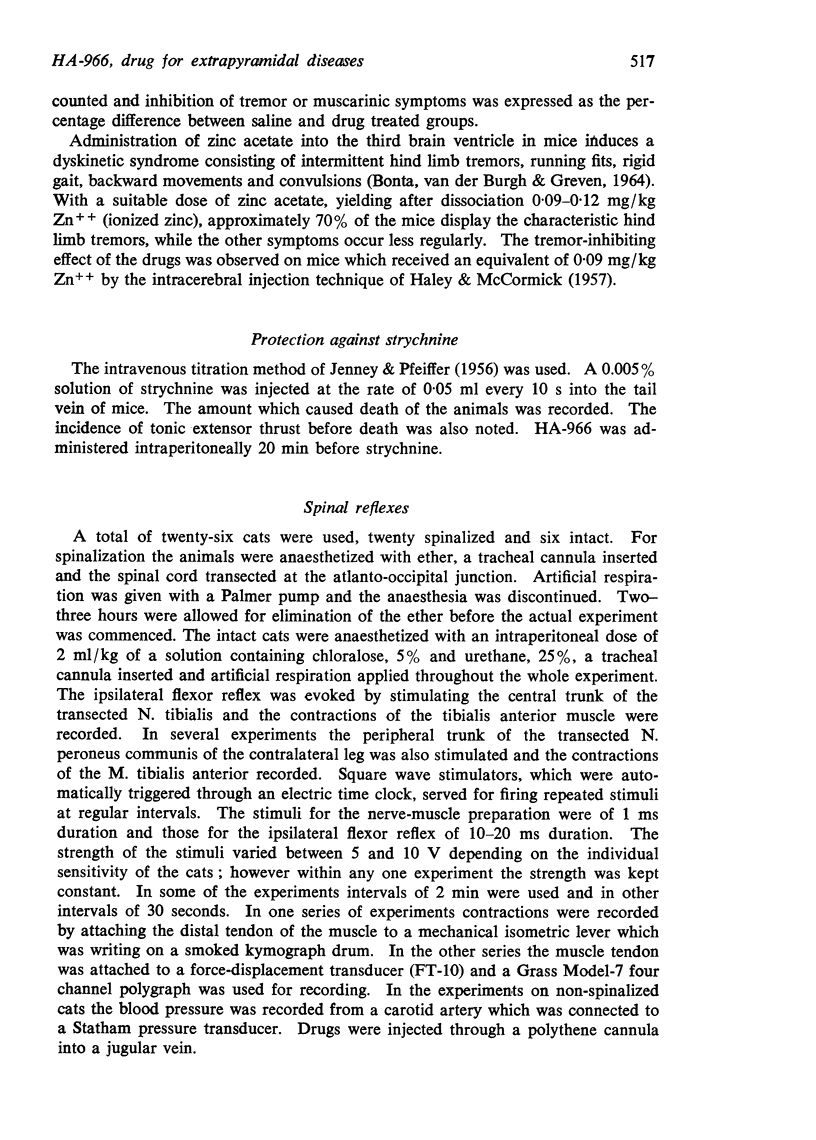
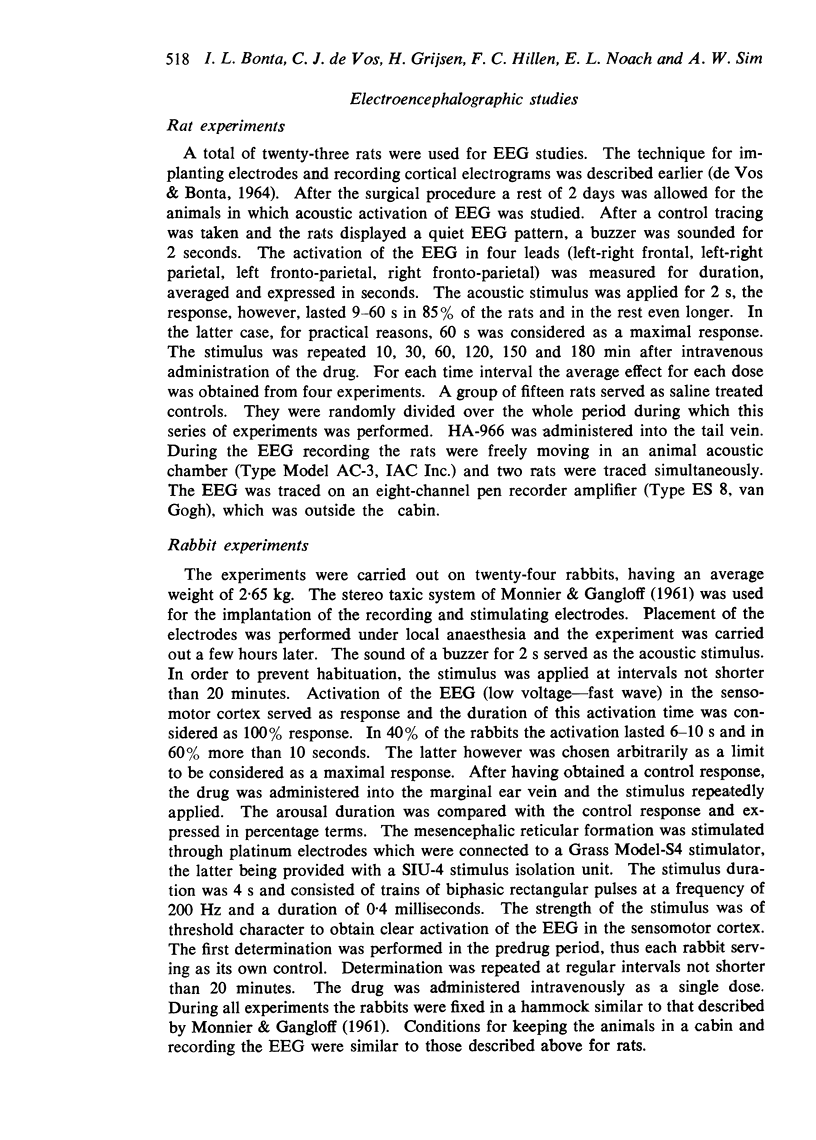
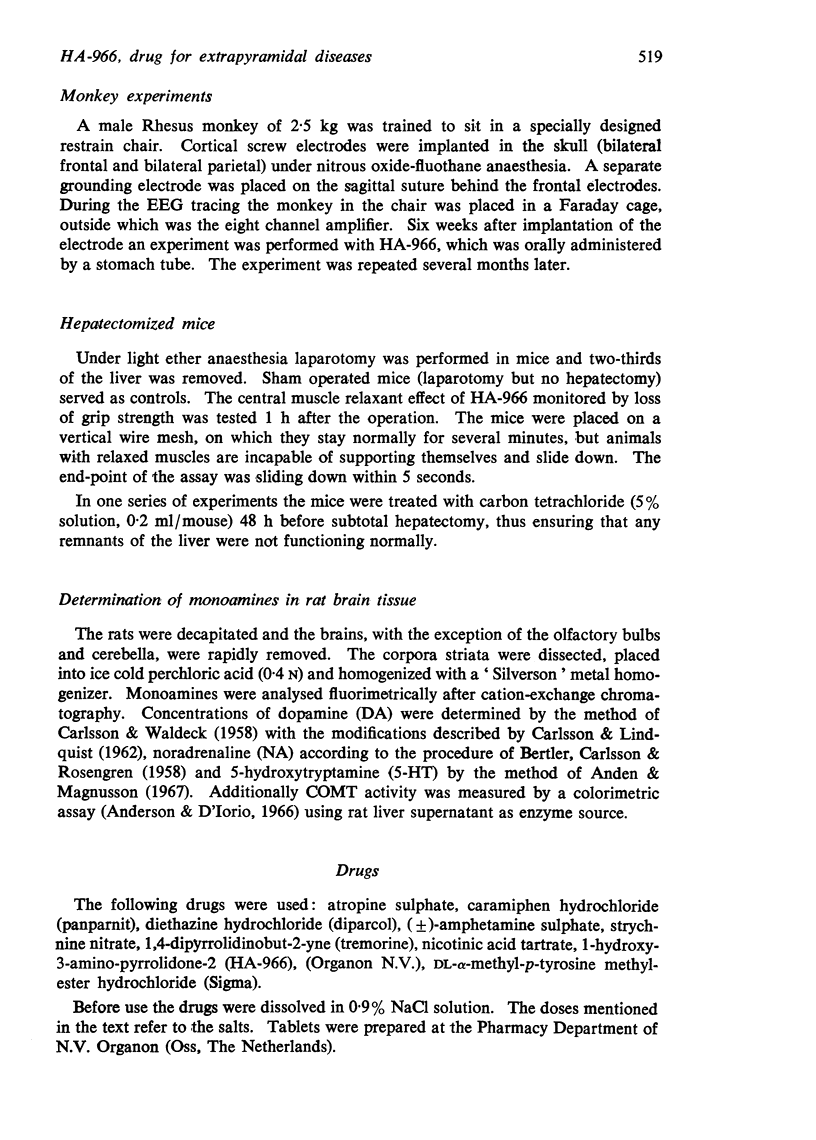
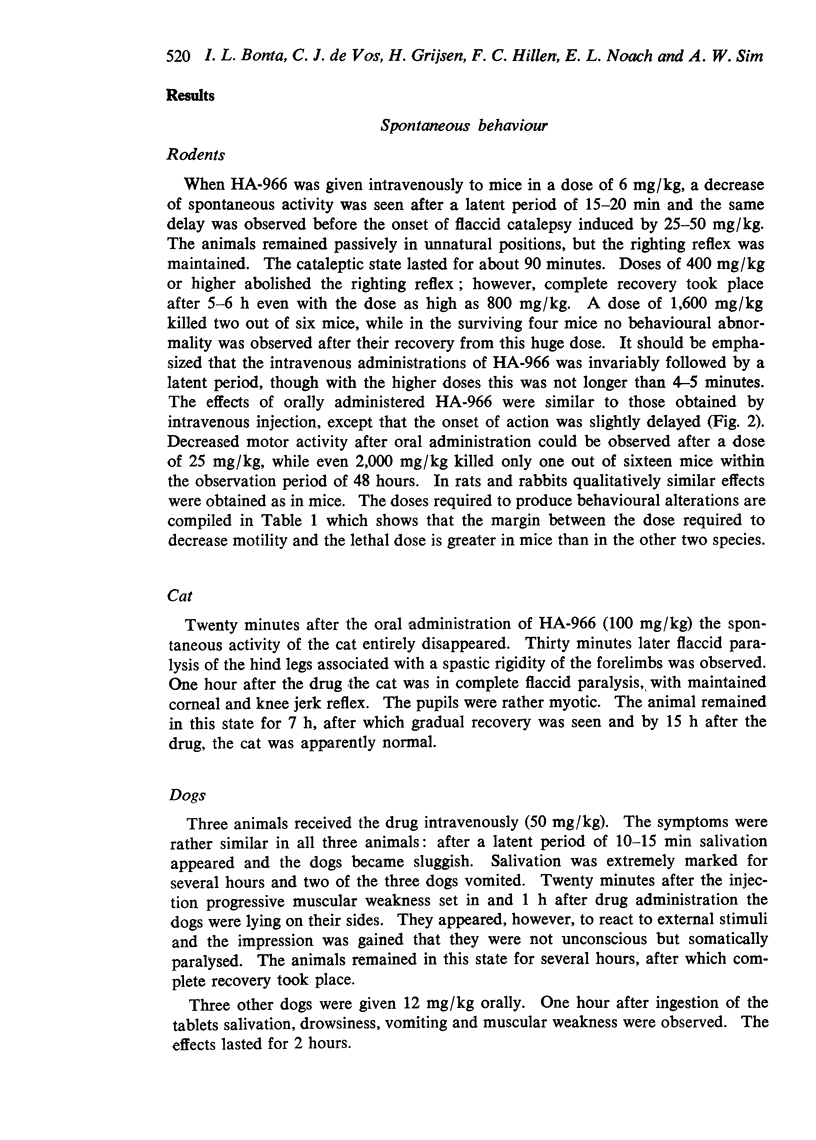
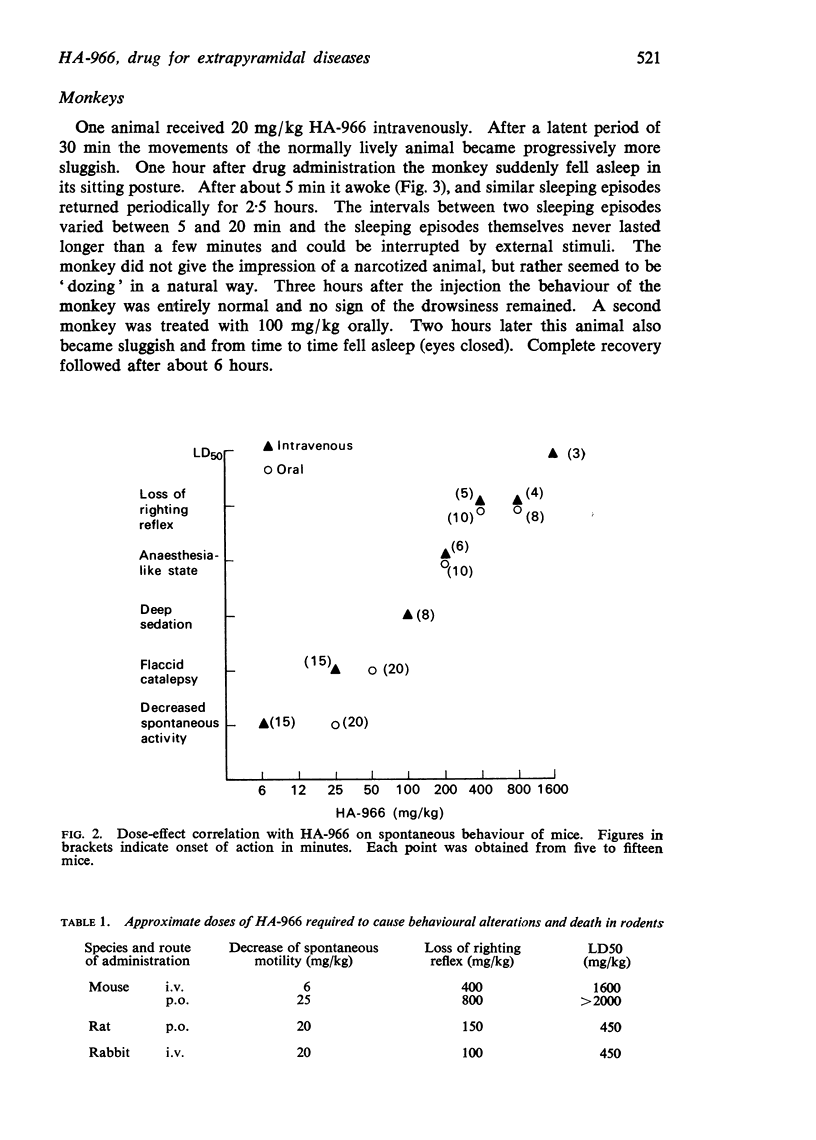
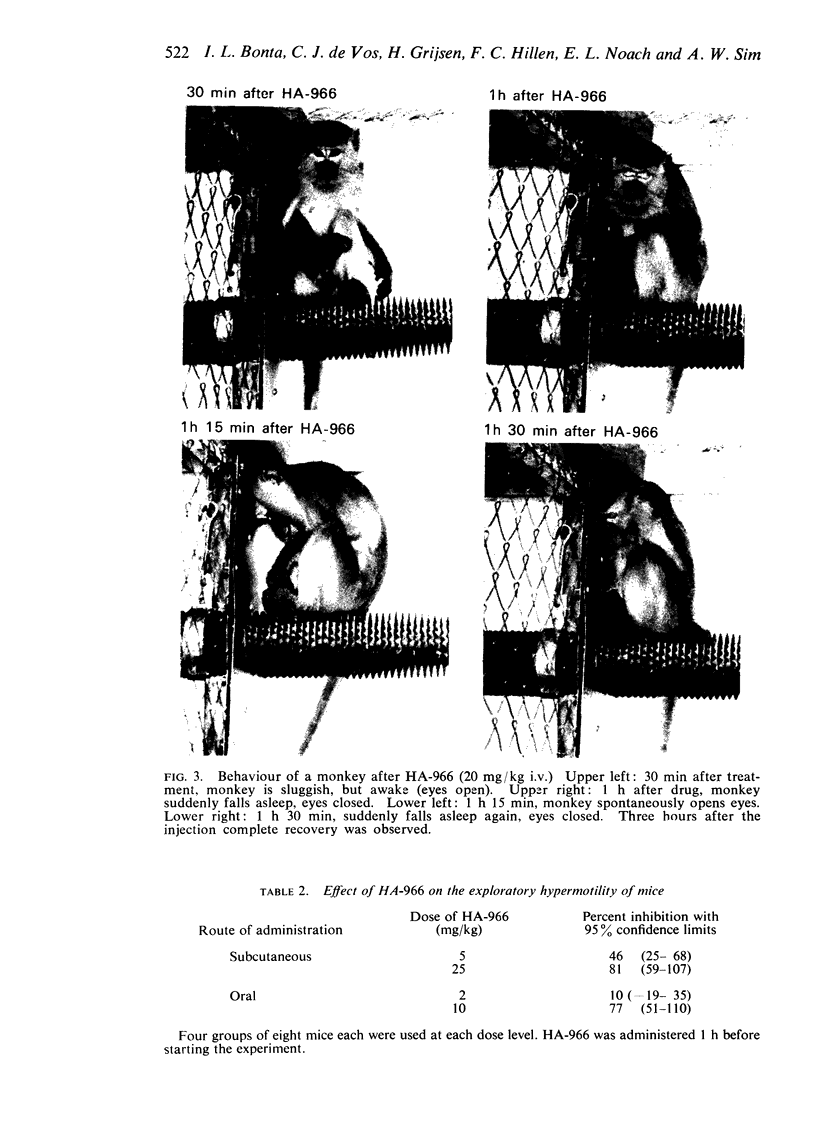
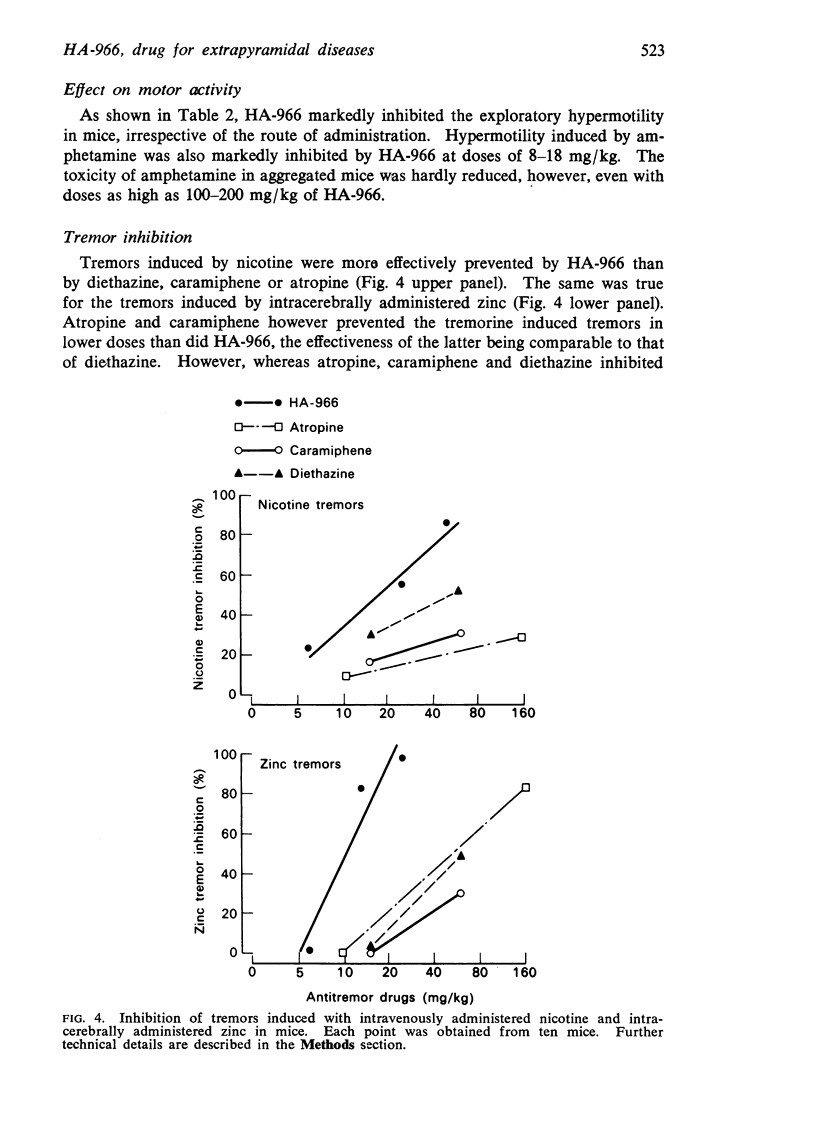
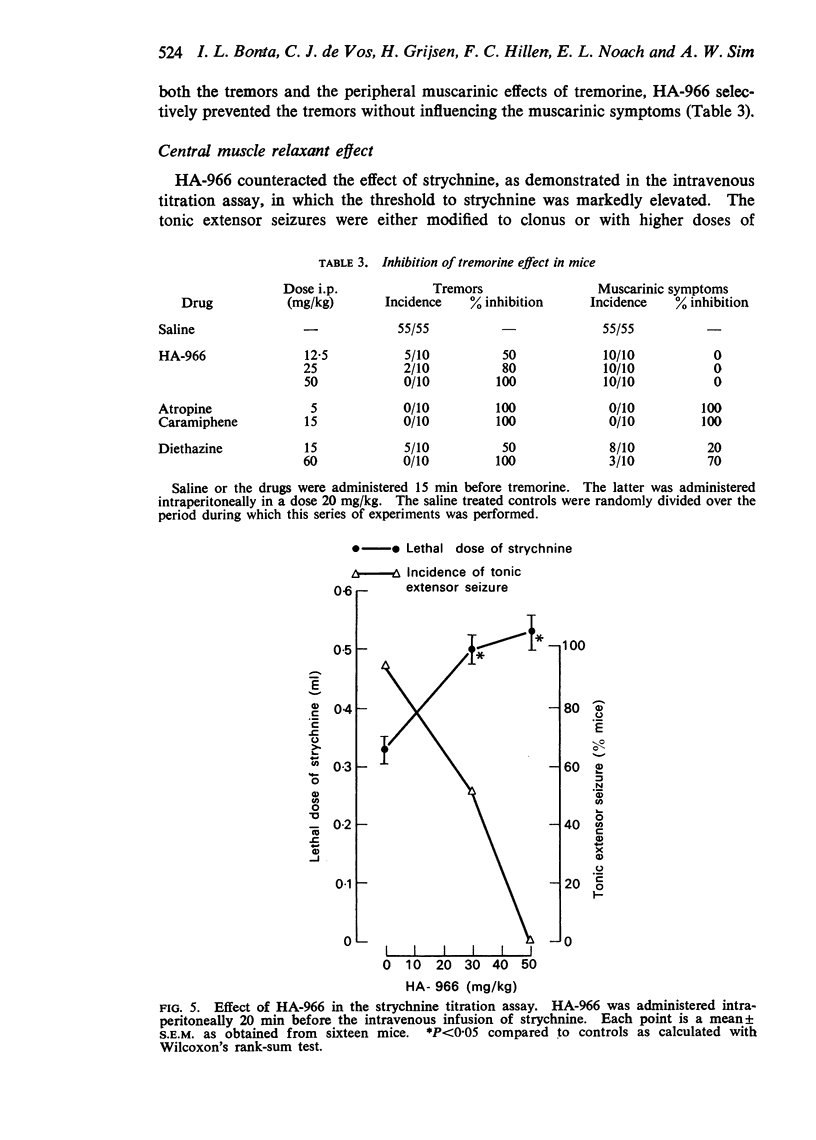
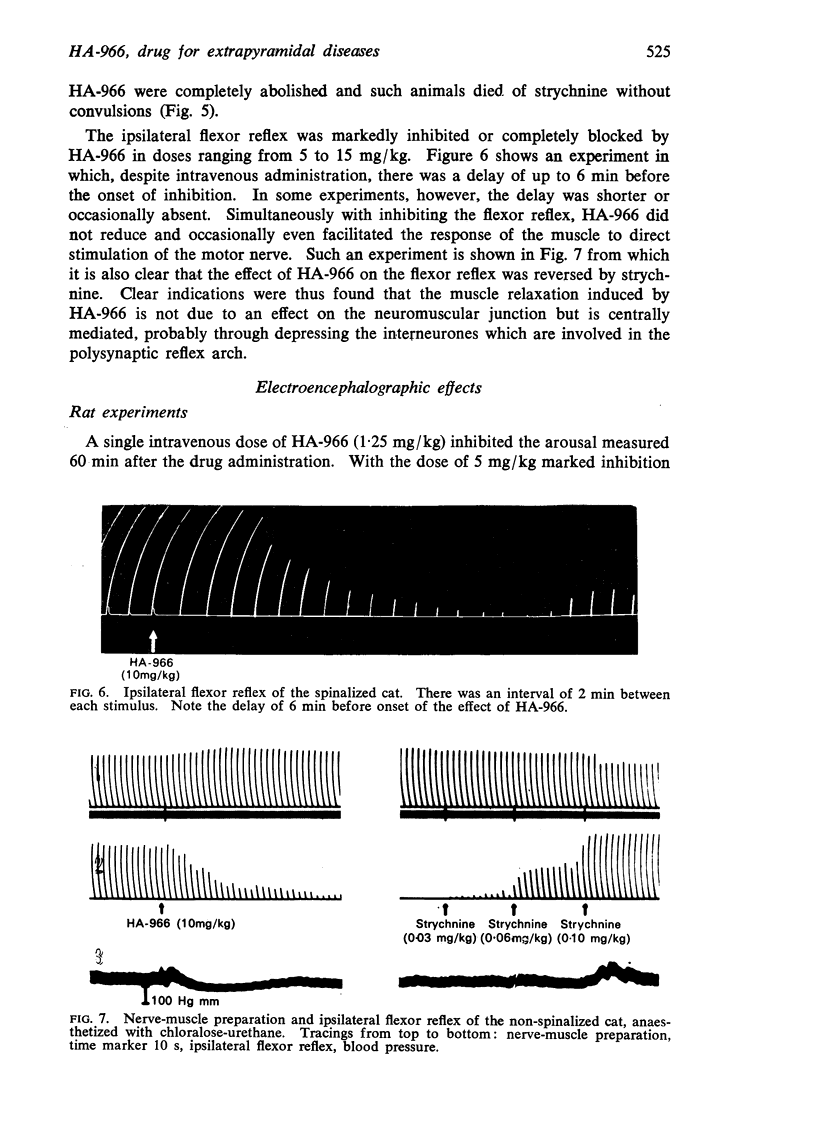
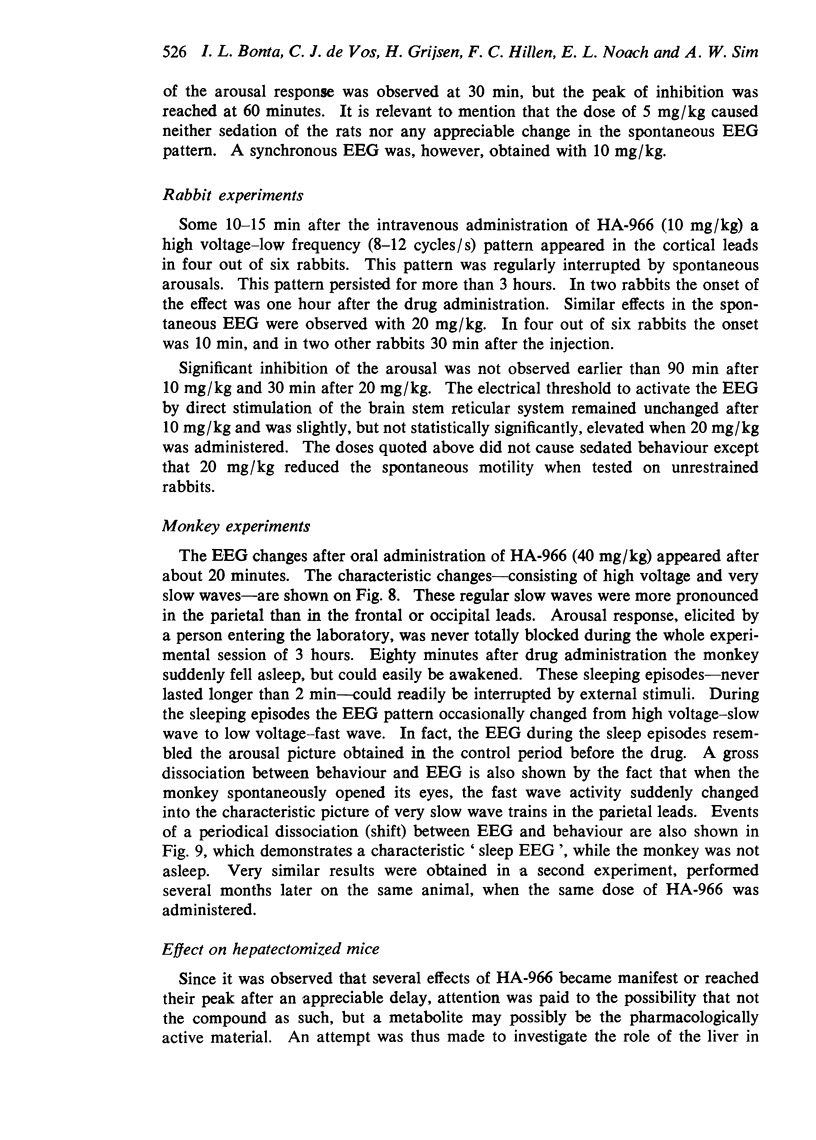
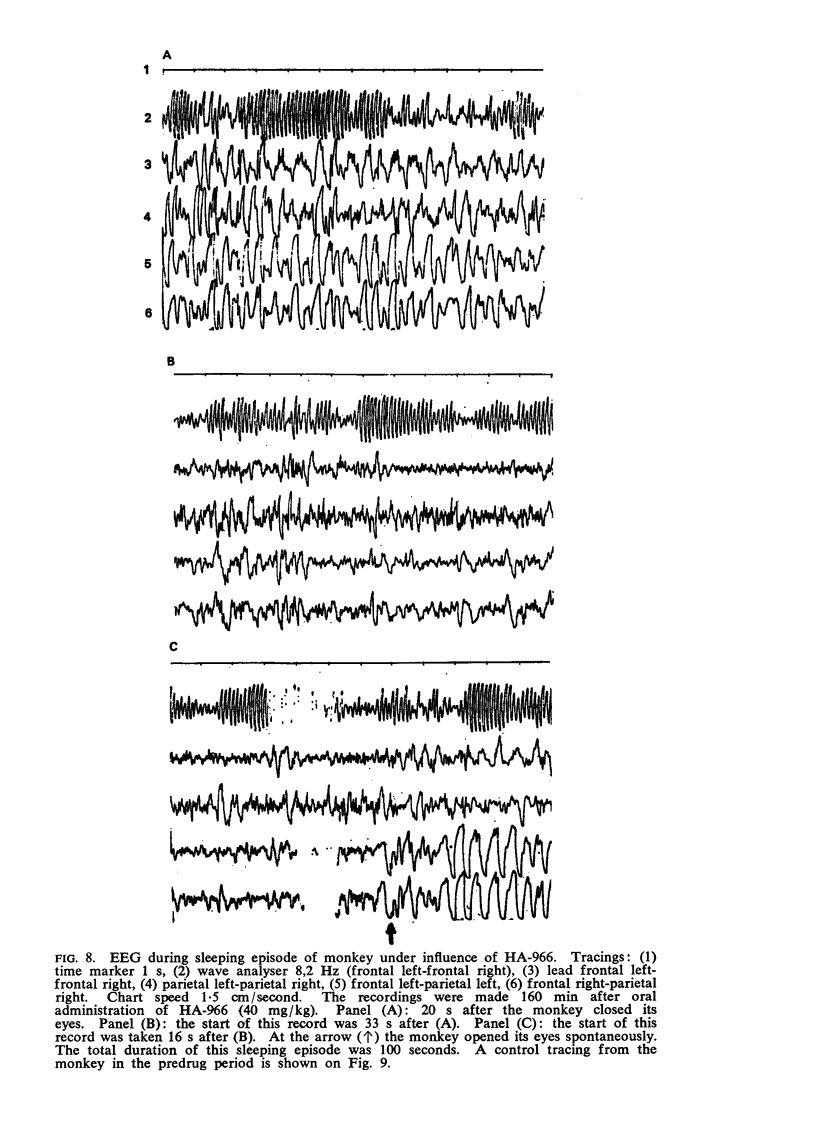
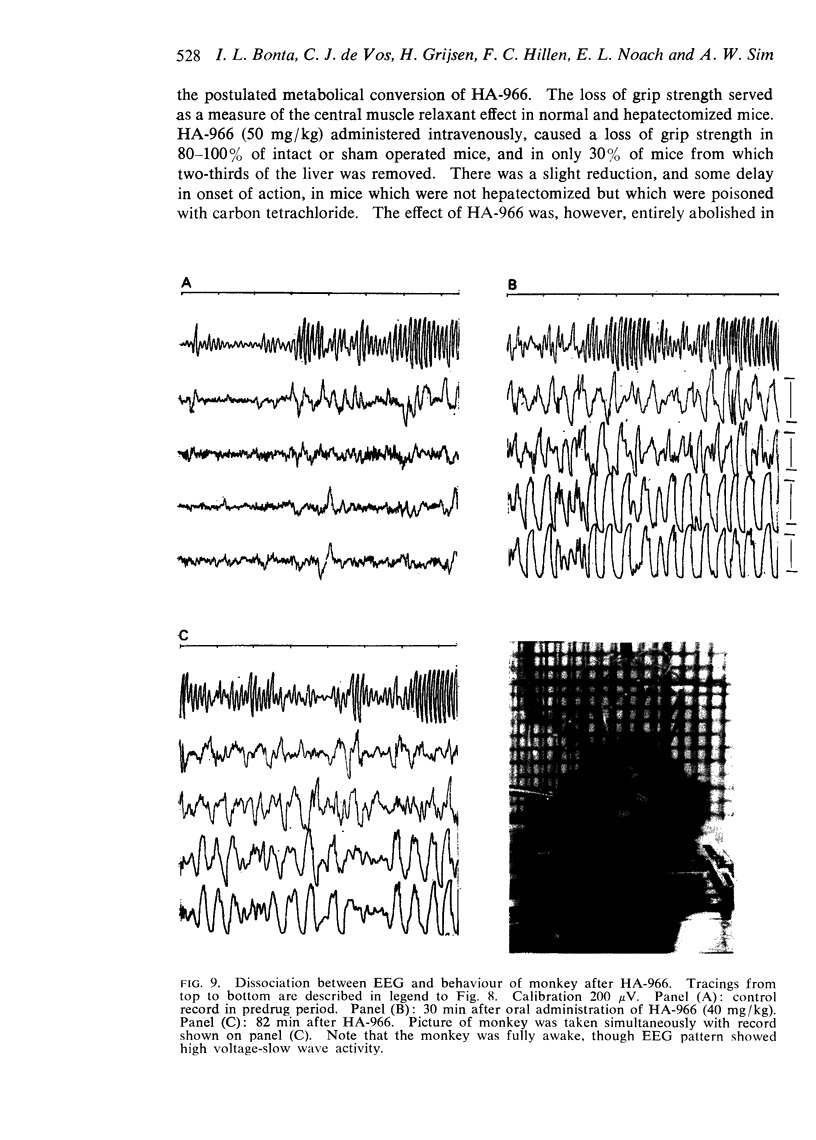
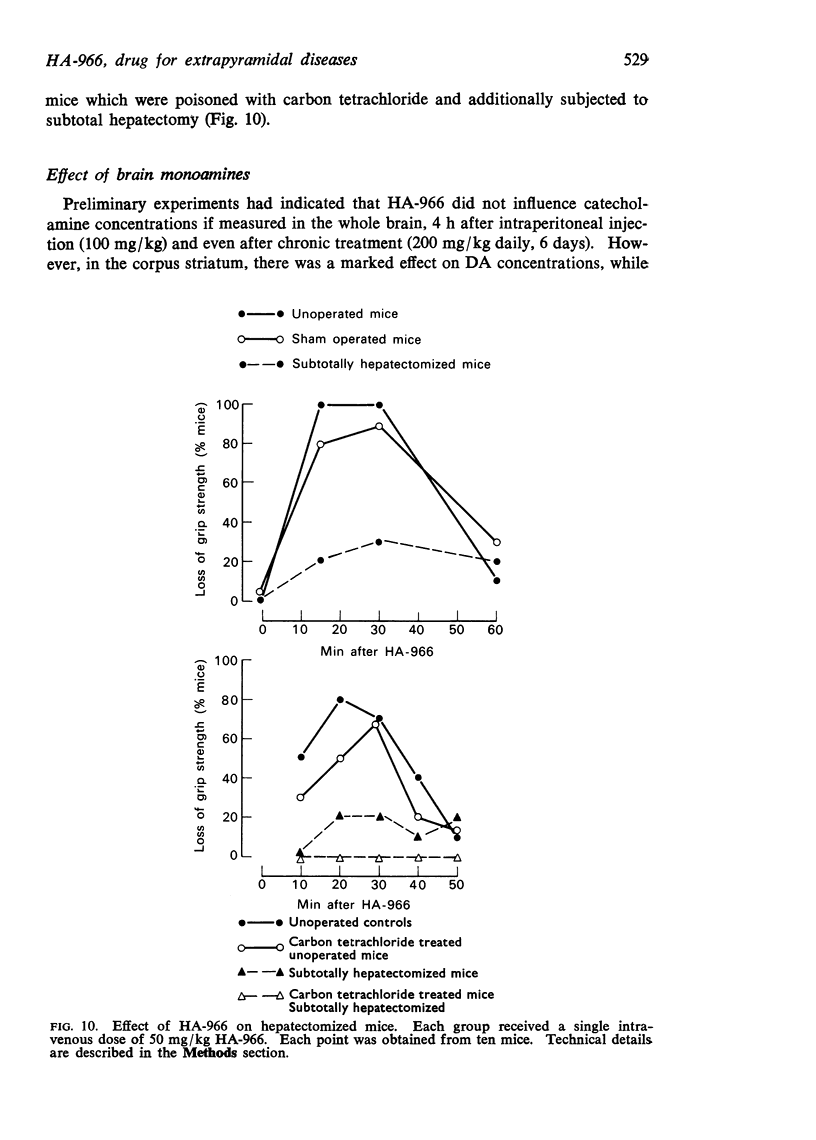
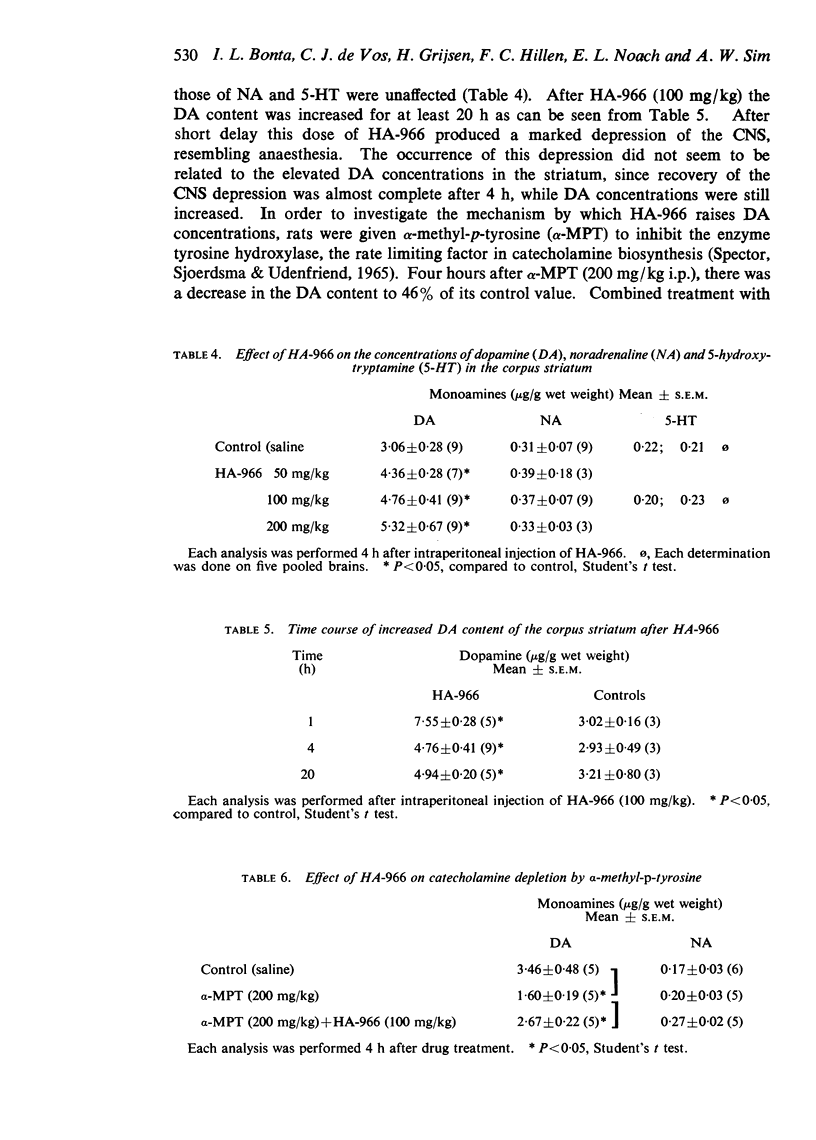
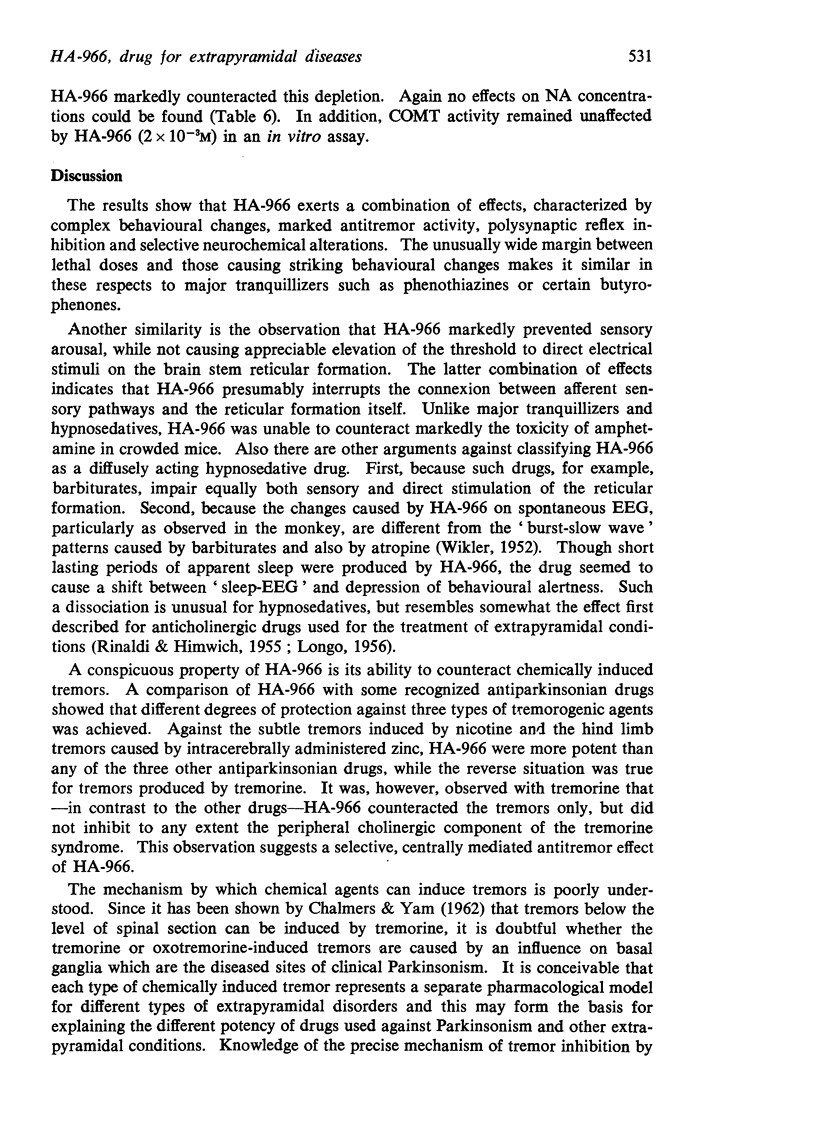
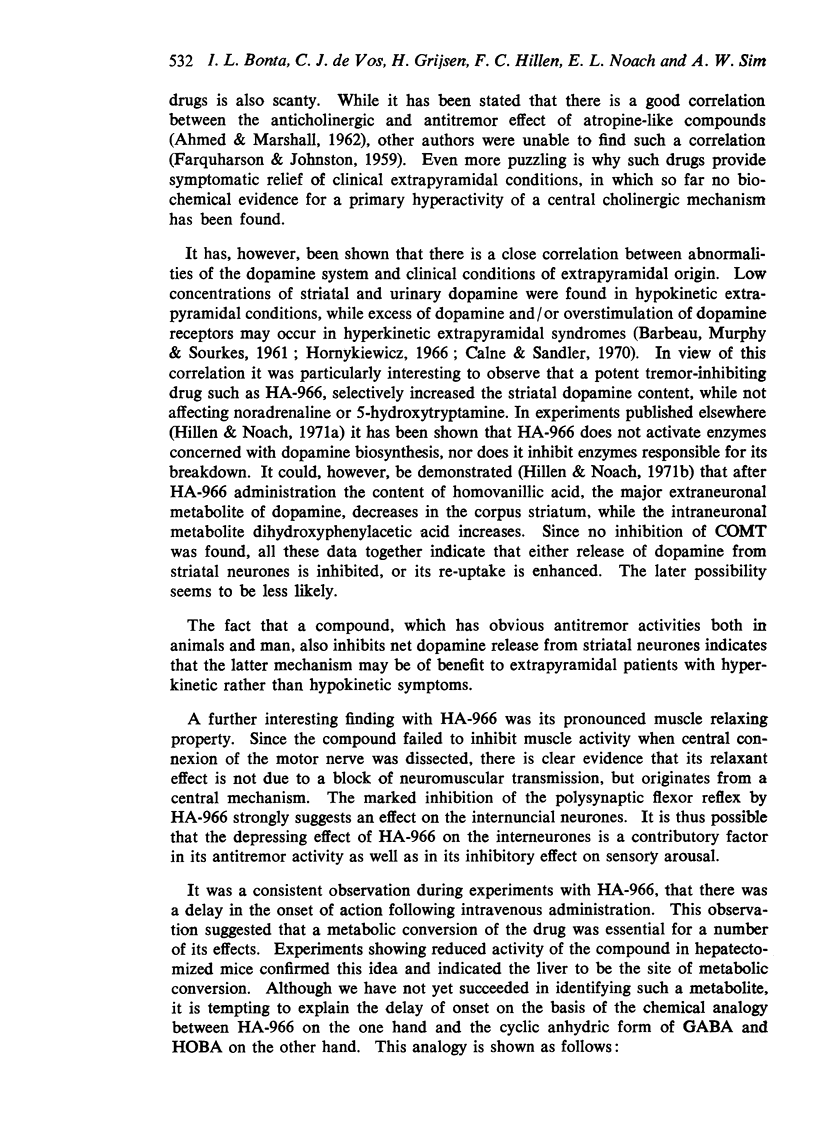
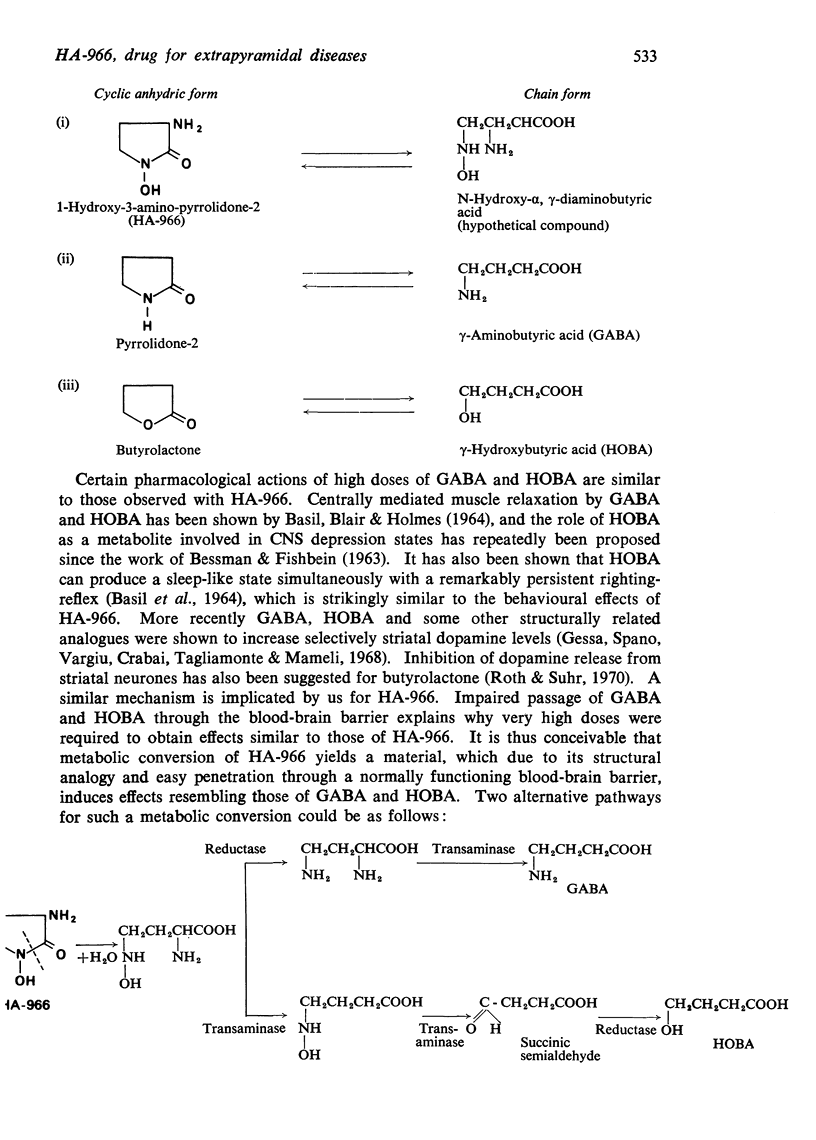
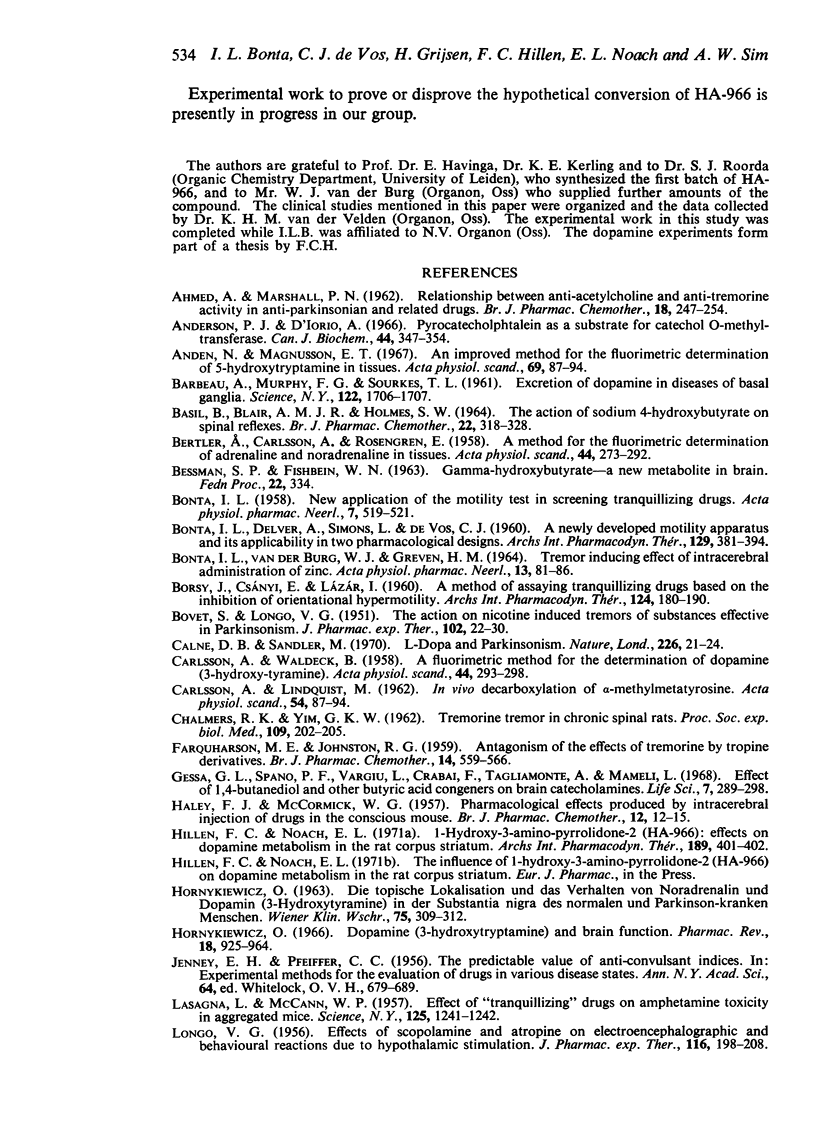
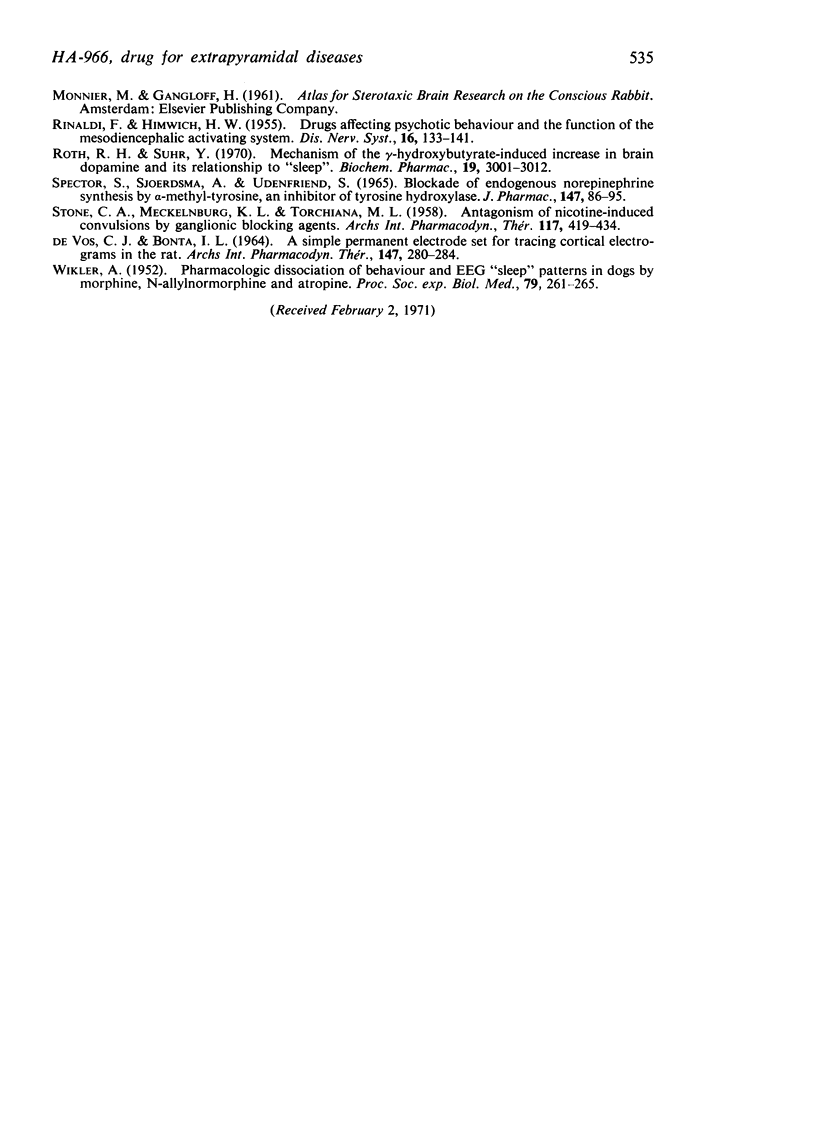
Images in this article
Selected References
These references are in PubMed. This may not be the complete list of references from this article.
- AHMED A., MARSHALL P. B. Relationship between anti-acetylcholine and anti-Tremorine activity in anti-parkinsonian and related drugs. Br J Pharmacol Chemother. 1962 Apr;18:247–254. doi: 10.1111/j.1476-5381.1962.tb01405.x. [DOI] [PMC free article] [PubMed] [Google Scholar]
- Anderson P. J., D'Iorio A. Pyrocatecholphthalein as a substrate for catechol O-methyltransferase. Can J Biochem. 1966 Mar;44(3):347–354. doi: 10.1139/o66-041. [DOI] [PubMed] [Google Scholar]
- Andén N. E., Magnusson T. An improved method for the fluorimetric determination of 5-hydroxytryptamine in tissues. Acta Physiol Scand. 1967 Jan-Feb;69(1):87–94. doi: 10.1111/j.1748-1716.1967.tb03493.x. [DOI] [PubMed] [Google Scholar]
- BARBEAU A., MURPHY G. F., SOURKES T. L. Excretion of dopamine in diseases of basal ganglia. Science. 1961 May 26;133(3465):1706–1707. doi: 10.1126/science.133.3465.1706-a. [DOI] [PubMed] [Google Scholar]
- BASIL B., BLAIR A. M., HOLMES S. W. THE ACTION OF SODIUM 4-HYDROXYBUTYRATE ON SPINAL REFLEXES. Br J Pharmacol Chemother. 1964 Apr;22:318–328. doi: 10.1111/j.1476-5381.1964.tb02036.x. [DOI] [PMC free article] [PubMed] [Google Scholar]
- BERTLER A., CARLSSON A., ROSENGREN E. A method for the fluorimetric determination of adrenaline and noradrenaline in tissues. Acta Physiol Scand. 1958 Dec 15;44(3-4):273–292. doi: 10.1111/j.1748-1716.1958.tb01627.x. [DOI] [PubMed] [Google Scholar]
- BONTA I. L., VAN DER BURG W. J., GREVEN H. M. TREMOR INDUCING EFFECT OF INTRACEREBRAL ADMINISTRATION OF ZINC. Acta Physiol Pharmacol Neerl. 1964;13:81–86. [PubMed] [Google Scholar]
- BORSY J., CSANYI E., LAZAR I. A method of assaying tranquilizing drugs based on the inhibition of orientational hypermotility. Arch Int Pharmacodyn Ther. 1960 Feb 1;124:180–190. [PubMed] [Google Scholar]
- BOVET D., LONGO V. G. The action on nicotine-induced tremors of substances effective in Parkinsonism. J Pharmacol Exp Ther. 1951 May;102(1):22–30. [PubMed] [Google Scholar]
- CARLSSON A., LINDQVIST M. In-vivo decarboxylation of alpha-methyl DOPA and alpha-methyl metatyrosine. Acta Physiol Scand. 1962 Jan;54:87–94. doi: 10.1111/j.1748-1716.1962.tb02331.x. [DOI] [PubMed] [Google Scholar]
- CARLSSON A., WALDECK B. A fluorimetric method for the determination of dopamine (3-hydroxytyramine). Acta Physiol Scand. 1958 Dec 15;44(3-4):293–298. doi: 10.1111/j.1748-1716.1958.tb01628.x. [DOI] [PubMed] [Google Scholar]
- CHALMERS R. K., YIM G. K. Tremorine tremor in chronic spinal rats. Proc Soc Exp Biol Med. 1962 Jan;109:202–205. doi: 10.3181/00379727-109-27152. [DOI] [PubMed] [Google Scholar]
- Calne D. B., Sandler M. L-Dopa and Parkinsonism. Nature. 1970 Apr 4;226(5240):21–24. doi: 10.1038/226021a0. [DOI] [PubMed] [Google Scholar]
- DE VOS C. J., BONTA I. L. A SIMPLE PERMANENT ELECTRODE SET FOR TRACING CORTICAL ELECTROGRAMS IN THE RAT. Arch Int Pharmacodyn Ther. 1964 Jan 1;147:280–284. [PubMed] [Google Scholar]
- FARQUHARSON M. E., JOHNSTON R. G. Antagonism of the effects of tremorine by tropine derivatives. Br J Pharmacol Chemother. 1959 Dec;14:559–566. doi: 10.1111/j.1476-5381.1959.tb00964.x. [DOI] [PMC free article] [PubMed] [Google Scholar]
- Gessa G. I., Spano P. F., Vargiu L., Crabai F., Tagliamonte A., Mameli L. Effect of 1,4-butanediol and other butyric acid congeners on brain catecholamines. Life Sci. 1968 Mar 1;7(5):289–298. doi: 10.1016/0024-3205(68)90202-6. [DOI] [PubMed] [Google Scholar]
- HALEY T. J., MCCORMICK W. G. Pharmacological effects produced by intracerebral injection of drugs in the conscious mouse. Br J Pharmacol Chemother. 1957 Mar;12(1):12–15. doi: 10.1111/j.1476-5381.1957.tb01354.x. [DOI] [PMC free article] [PubMed] [Google Scholar]
- HORNYKIEWICZ O. [The tropical localization and content of noradrenalin and dopamine (3-hydroxytyramine) in the substantia nigra of normal persons and patients with Parkinson's disease]. Wien Klin Wochenschr. 1963 May 3;75:309–312. [PubMed] [Google Scholar]
- Hillen F. C., Noach E. L. 1-hydroxy-3-amino-pyrrolidone-2 (HA-966): effects on dopamine metabolism in the rat corpus striatum. Arch Int Pharmacodyn Ther. 1971 Feb;189(2):401–402. [PubMed] [Google Scholar]
- Hornykiewicz O. Dopamine (3-hydroxytyramine) and brain function. Pharmacol Rev. 1966 Jun;18(2):925–964. [PubMed] [Google Scholar]
- JENNEY E. H., PFEIFFER C. C. The predictable value of anticonvulsant indices. Ann N Y Acad Sci. 1956 Nov 16;64(4):679–689. doi: 10.1111/j.1749-6632.1956.tb36840.x. [DOI] [PubMed] [Google Scholar]
- LASAGNA L., MCCANN W. P. Effect of tranquilizing drugs on amphetamine toxicity in aggregated mice. Science. 1957 Jun 21;125(3260):1241–1242. doi: 10.1126/science.125.3260.1241. [DOI] [PubMed] [Google Scholar]
- LONGO V. G. Effects of scopolamine and atropine electroencephalographic and behavioral reactions due to hypothalamic stimulation. J Pharmacol Exp Ther. 1956 Feb;116(2):198–208. [PubMed] [Google Scholar]
- RINALDI F., HIMWICH H. E. Drugs affecting psychotic behavior and the function of the mesodiencephalic activating system. Dis Nerv Syst. 1955 May;16(5):133–141. [PubMed] [Google Scholar]
- Roth R. H., Suhr Y. Mechanism of the gamma-hydroxybutyrate-induced increase in brain dopamine and its relationship to "sleep". Biochem Pharmacol. 1970 Dec;19(12):3001–3012. doi: 10.1016/0006-2952(70)90086-9. [DOI] [PubMed] [Google Scholar]
- SPECTOR S., SJOERDSMA A., UDENFRIEND S. BLOCKADE OF ENDOGENOUS NOREPINEPHRINE SYNTHESIS BY ALPHA-METHYL-TYROSINE, AN INHIBITOR OF TYROSINE HYDROXYLASE. J Pharmacol Exp Ther. 1965 Jan;147:86–95. [PubMed] [Google Scholar]
- STONE C. A., MECKELNBURG K. L., TORCHIANA M. L. Antagonism of nicotine-induced convulsions by ganglionic blocking agents. Arch Int Pharmacodyn Ther. 1958 Nov-Dec;117(3-4):419–434. [PubMed] [Google Scholar]
- WIKLER A. Pharmacologic dissociation of behavior and EEG "sleep patterns" in dogs; morphine, n-allylnormorphine, and atropine. Proc Soc Exp Biol Med. 1952 Feb;79(2):261–265. doi: 10.3181/00379727-79-19345. [DOI] [PubMed] [Google Scholar]



